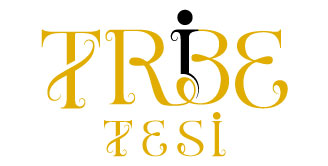The Kitenge, also known as a Chitenge, is a versatile piece of fabric that originated in East, West, and Central Africa. This piece of fabric is known for its bright colours and unique patterns that are used to create a wide range of clothing items and accessories. Despite its relatively simple design, the kitenge has become an integral part of African fashion and culture.
One of the most common uses of the kitenge is as a wrapper or sarong. Women in Africa often use the fabric to wrap around their waist or chest, creating a stylish and practical piece of clothing. The fabric can also be used as a headscarf, providing protection from the sun and adding an extra layer of style to any outfit.
Another popular use of the kitenge is as a baby sling. Parents in Africa have been using the fabric to carry their babies for generations, providing a comfortable and secure way to transport their little ones. The fabric is lightweight and easy to wrap, making it ideal for this use.
The kitenge has also found its way into the world of fashion, with designers using the fabric to create a wide range of clothing items, from dresses and skirts to jackets and pants. The bright colors and unique patterns of the kitenge make it a perfect material for creating eye-catching, statement pieces.

In addition to its use in fashion, the kitenge has also become an important symbol of African culture. The fabric is often used to tell stories and convey cultural beliefs, with different patterns and colours representing different aspects of African history and tradition.
Despite its strong association with African identity, kitenge was originally imported from Holland. Dutch colonisation facilitated the export of these textiles abroad, marked by the Berlin Conference of 1885 when European nations segmented East Africa into disparate spheres of influence.
It furthermore plays an important part of traditional African dress, with many communities using the fabric to create traditional clothing items. The different patterns and colours used in traditional African dress often carry important cultural and spiritual meanings, making the kitenge an important part of the cultural fabric of Africa.

Today, the kitenge is being embraced by celebrities and influencers, with many popular figures wearing the fabric as a way to show their support for African culture and fashion. Some of the most well-known advocates of the kitenge include fashion icons like Lupita Nyong’o, Naomi Campbell, and Edith Kimani. These women have used their platform to showcase the beauty and versatility of the kitenge, inspiring others to embrace the fabric and incorporate it into their own style.
But that’s not all, the kitenge has also become an important part of African music and film. The bright colours and unique patterns of the fabric have been used to create costumes for musicians and actors, adding an extra layer of visual interest to performances and productions. Many African musicians and filmmakers use the kitenge as a way to celebrate their cultural heritage and showcase the rich history and diversity of Africa.
The kitenge is a versatile piece of fabric that has become an important part of African culture and fashion. Whether used as a wrapper, headscarf, baby sling, or fashion statement, the kitenge is a symbol of the rich history and diverse culture of Africa. With its bright colours, unique patterns, and versatility, the kitenge is sure to continue to be a popular choice for generations to come.

